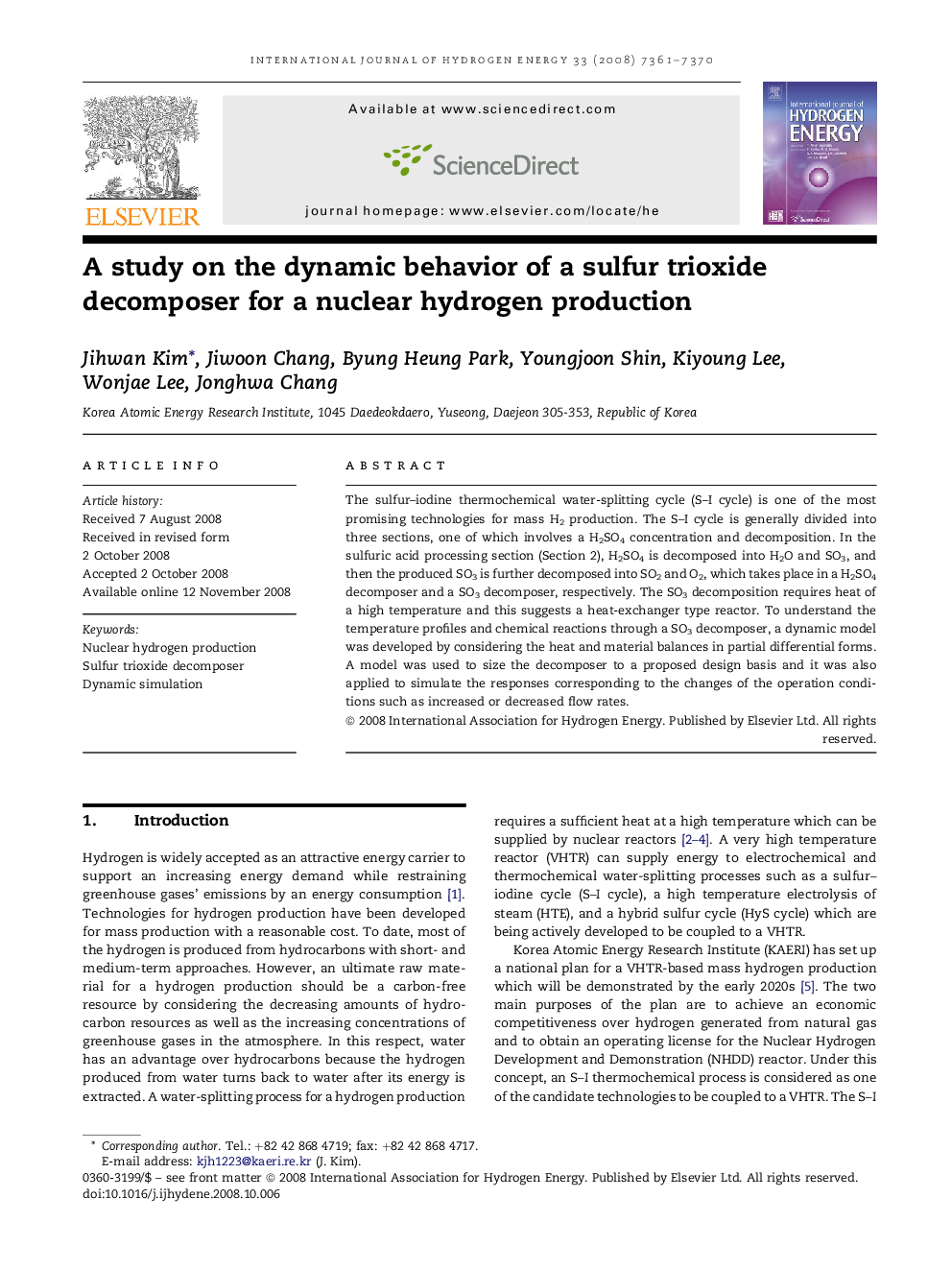| Article ID | Journal | Published Year | Pages | File Type |
|---|---|---|---|---|
| 1281330 | International Journal of Hydrogen Energy | 2008 | 10 Pages |
The sulfur–iodine thermochemical water-splitting cycle (S–I cycle) is one of the most promising technologies for mass H2 production. The S–I cycle is generally divided into three sections, one of which involves a H2SO4 concentration and decomposition. In the sulfuric acid processing section (Section 2), H2SO4 is decomposed into H2O and SO3, and then the produced SO3 is further decomposed into SO2 and O2, which takes place in a H2SO4 decomposer and a SO3 decomposer, respectively. The SO3 decomposition requires heat of a high temperature and this suggests a heat-exchanger type reactor. To understand the temperature profiles and chemical reactions through a SO3 decomposer, a dynamic model was developed by considering the heat and material balances in partial differential forms. A model was used to size the decomposer to a proposed design basis and it was also applied to simulate the responses corresponding to the changes of the operation conditions such as increased or decreased flow rates.
